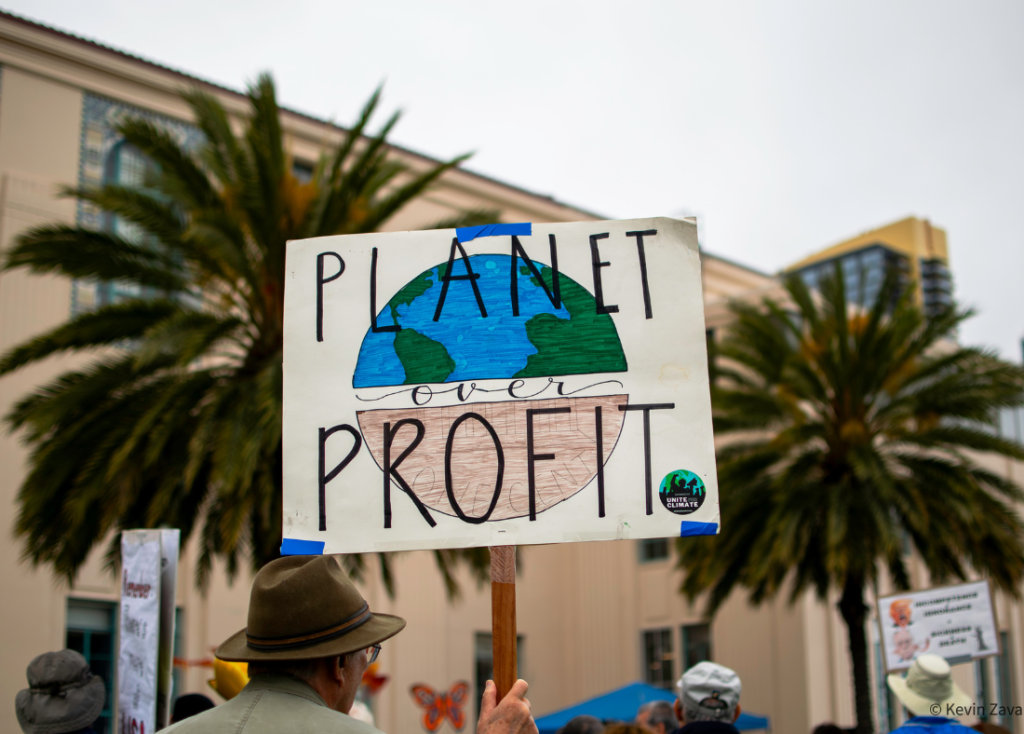By: Diego Sandoval (he/him), Youth v. Oil Media Lead

Our greatest fear that one of the world’s most influential government administrations would roll back many of its sustainability initiatives is being realized during President Trump’s second term in office, to the horror and dismay of millions of environmentalists across the US.
This is seen most notably with President Trump’s tearing into the Inflation Reduction Act (IRA) and the Infrastructure and Investment Jobs Act (IIJA) also known as the Bipartisan Infrastructure Law (BIL). These acts are dedicated to investing in environmental infrastructure to prepare for future extreme weather events, domestic energy production to increase its affordability and access, as well as efforts to monitor, reduce, and clean up pollution. The IIJA is the largest investment in US infrastructure since Eisenhower’s presidency.
The termination of funds has blocked $1.7 billion in funds for air and water quality monitoring, as well as $20 billion in projects reducing climate pollution and supporting clean energy initiatives. These cuts will devastate our nation’s ability to monitor and combat air pollution which will disproportionately impact BIPOC and low income communities. We will see healthcare bills rise and more premature deaths across the country. These terminations, however, are being fought in court on the basis that they ignore congressional appropriations law, contractual agreements, as well as multiple court orders.
The belligerent hydra-head-monster that is the Trump administration’s assault on seemingly everyone is spotlighted most by the 10% base tariff placed on all countries that went into effect on April 5th, coined “Liberation Day.” Specifically, Trump targeted countries which we share large trade deficits with. Tariffs are taxes imposed on goods received from other countries; they serve to regulate prices and allow domestic industries to compete with cheaper overseas production prices. Trump initiated these tariffs to encourage investment in domestic production and for consumers to buy more American goods, with the belief of its long-term economic benefits. These tariffs not only harm relationships between foreign countries and the US, but also greatly hinder the transition of US society towards clean energy.
Lithium-ion batteries are expected to play a more significant role in society as we move towards electric vehicles, and away from traditional gasoline-powered vehicles. Japanese, South Korean, and Chinese companies dominate global battery manufacturing, with 82% of all li-ion batteries entering the US coming from China in Q2 of 2024. Our EV industry relies on 35% of all Li-ion batteries to come from just these 3 countries. Before the current tariff storm, tariffs on Chinese goods hovered around 20% but have skyrocketed to 145%. However, on May 14th, a 30% tariff was imposed during a 90-day pause to further debate tariff rates. These recent government-imposed duties directly affect the EV industry as the cost of EV batteries, as well as semiconductors and electronic control modules, greatly depends on global supply chain circumstances and can rise significantly as a result. With EVs historically having higher prices than fossil-fuel reliant cars, on average $12,000 more, this hike in price, estimated to be between $3,500 to $12,000, will make these vehicles evermore inaccessible and delay our society’s transition to a society supported by clean-fuel cars.
The implementation of solar in American society has also taken a great hit from tariffs. The 4 Southeast Asian countries most responsible for solar panel imports are seeing duties on imported solar panels and cells of up to a resounding 3,500%. The 4 being Vietnam, Thailand, Malaysia, and Cambodia. Solar panel installations saw a rise of 51% year-over-year in 2023. The increases in tariffs, combined with the paused funding from the IRA for domestic clean-energy projects, have resulted in the projected costs of future solar panel installation and implementation of solar projects to increase and strengthen barriers to widespread solar panel implementation.
Trump’s initial attack on the solar industry during his 1st term resulted in the elimination of 62,000 jobs and deterred 19 billion as a result of imposed tariffs, the damage done by this 2nd term is just beginning. Additionally, the freezing of funds from the IRA and the IIJA has led to many clean energy projects freezing in their tracks, leaving them in various stages of completion around the US. Uncertainty regarding conversations about their completion have caused temporary layoffs or job losses as the construction of these projects is halted. Despite this administration’s intentions of encouraging jobs in domestic production, they have inadvertently hurt existing jobs and have prevented thousands of employment opportunities from being created.
Living in a country recognized as a global power meant to be spearheading clean initiatives yet seeing a barrage of attacks on said industry is still disheartening on the best of days. With the impacts of climate change becoming more frequent and stronger daily, it is more important than ever to be informed about our current administration’s actions than ever before, so that we can present a united front against the handful of individuals and industries perpetrating these actions and fight for the safety and quality of the future we all rely on.
